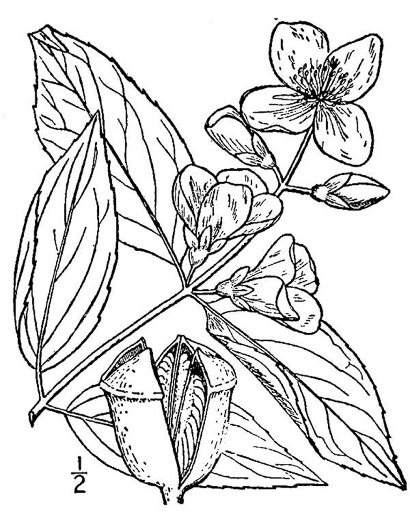Spermatophytes (seed plants): Angiosperms (flowering plants): Eudicots: Core Eudicots: Asterids: Cornales
WEAKLEY'S FLORA OF THE SOUTHEASTERN US (4/24/22):
Philadelphus coronarius
FAMILY
Hydrangeaceae
Go to FSUS key
Dig deeper at SERNEC, a consortium of southeastern herbaria.
Check out EDDMapS.org to see where this has been reported.
Read more about European Mock-orange at Vascular Plants of North Carolina.
SYNONYMOUS WITH
PLANTS NATIONAL DATABASE:
Philadelphus coronarius
FAMILY
Hydrangeaceae
SYNONYMOUS WITH Floristic Synthesis of North America. BONAP (Kartesz, 2021)
Philadelphus coronarius
SYNONYMOUS WITH Flora of North America
Philadelphus coronarius
COMMON NAME:
European Mock-orange, Sweet Mock-orange
To see larger pictures, click or hover over the thumbnails.
WEAKLEY'S FLORA OF THE SOUTHEASTERN US (4/24/22):
Philadelphus coronarius
FAMILY
Hydrangeaceae
SYNONYMOUS WITH
PLANTS NATIONAL DATABASE:
Philadelphus coronarius
FAMILY
Hydrangeaceae
SYNONYMOUS WITH
Floristic Synthesis of North America. BONAP (Kartesz, 2021)
Philadelphus coronarius
SYNONYMOUS WITH
Flora of North America
Philadelphus coronarius
If a search such as "Carex leptalea var. leptalea" doesn't deliver the results you want, try "Carex leptalea".
Or, to minimize chances of a misspelling, try just "Carex le".
Less is more: If "pencil flower" doesn't deliver the results you want, try "pencil".


